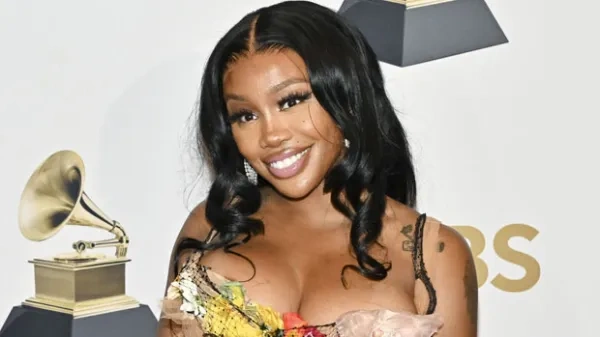Let me set the scene for you. It was a perfectly ordinary Tuesday. I had a few errands to run, and I decided to pop into a McDonald’s for something simple. A hot coffee, perhaps. Maybe one of their apple pies, which, I’ll admit, is a reasonably constructed dessert when it’s fresh from the fryer. I expected a straightforward, five-minute transaction.
What I got instead was a full-blown assault on my senses and my sanity.
The entire restaurant was abuzz. The menu screens, usually displaying sensible options like the Quarter Pounder or the McChicken, were dominated by a lurid, violent shade of purple. And everyone, from the teenagers behind the counter to the children in the play area, was talking about a birthday.
“Are you going to try the Grimace Shake?” a young woman asked her friend. “It’s for his birthday!”
I stopped in my tracks. Grimace? Birthday? I vaguely recalled Grimace from when my own children were small. He was a large, amorphous, purple blob of a character. A supporting player, at best. He was the Ringo Starr of the McDonaldland ensemble. And now he has a birthday? And this birthday warrants its own beverage? A beverage, I might add, that looked less like a milkshake and more like a science experiment gone horribly wrong.
Frankly, I was appalled. This wasn’t a restaurant; it was a circus. And that aggressively purple concoction wasn’t just a drink; it was a symptom of a much larger problem in modern marketing. I didn’t get a coffee that day. I left with a mission: to file a formal complaint about the chaotic, undignified, and frankly baffling marketing mess that was the McDonald’s Grimace Shake. So, consider this my official notice. I’d like to speak to the person in charge. Be it the chef, the head of marketing, or Grimace himself. Someone needs to answer for this.
A Formal Review of This “Purple Concoction”
Before I delve into the marketing malpractice, let’s first address the product itself. What, precisely, was the Grimace Birthday Shake? For those of you who were blissfully unaware of this chapter in fast-food history, it was a limited-time milkshake released in the summer of 2023.
Its primary selling point was its color. It was a shade of purple so intense it felt like it was shouting at you. It was the color of a fresh bruise, of Barney the Dinosaur’s deepest anxieties. It was, in a word, unnatural.
The flavor was advertised as being berry-flavored, but that is a vague and non-committal description. Which berries? Was it strawberry? Raspberry? The mysterious and often disappointing “blue raspberry”? Having been goaded into trying a sip by my nephew (a decision I will regret on my deathbed), I can tell you it tasted mostly of sugar, vanilla soft-serve, and a chemical approximation of what a focus group thinks the color purple should taste like. It was cloying, indistinct, and left a strange film in my mouth. It was, in essence, a beverage designed entirely for a photograph, not for human consumption.
But the taste, as unpleasant as it was, was not the main offense. The true crime was the cultural chaos this purple goo unleashed upon our society, all thanks to a bizarre trend on the video platform TikTok.
The TikTok Trend: An Utter Catastrophe for Public Decency
If you thought a weirdly purple milkshake was the strangest part of this story, you are sorely mistaken. The Grimace Shake became the centerpiece of a viral trend that was nothing short of a public nuisance.
Here’s how it worked: a young person would film themselves wishing Grimace a happy birthday and taking their first sip of the shake. The video would then immediately cut to a staged, horror-movie-style aftermath. The person would be sprawled on the floor, in a ditch, or slumped over a car hood, with the purple milkshake splattered all around them as if it were evidence from a crime scene. They would be pretending to be unconscious, or worse, the victim of some terrible, purple-hued fate.
I want you to read that again. The official-unofficial marketing for this birthday milkshake was teenagers pretending the drink had dispatched them.
What in the name of Ronald McDonald is that?
I demand to know who in the McDonald’s corporate office saw this trend unfolding and thought, “Ah, brilliant! Our brand is now synonymous with mock crime scenes. This is fantastic engagement!” Back in my day, we enjoyed a Shamrock Shake for its minty flavor and festive green color. We didn’t pretend it was a toxic substance that had caused our untimely demise in a public park.
This wasn’t marketing; it was a complete and utter loss of control. It was a multi-billion-dollar corporation letting its brand narrative be dictated by teenagers with smartphones and a questionable sense of humor. Either McDonald’s intentionally created a product so bizarre they knew it would inspire this kind of digital mayhem, or they were so out of touch they had no idea what was coming. Frankly, I don’t know which is worse. Both are grounds for a serious managerial review.
A Word on Grimace Himself
And this brings me to the guest of honor at this disastrous party: Grimace. Who is this character, and why does he warrant this level of fanfare? He is a blob. A lovable blob, perhaps, but a blob nonetheless. He has no discernible skills, no clear purpose in the McDonaldland hierarchy. He is famous simply for being large, purple, and present.
Celebrating his birthday feels like a desperate attempt to manufacture nostalgia for something we were never that invested in to begin with. It’s like throwing a surprise party for your neighbor’s garden gnome. Why? What did he do to deserve this? The entire premise is baffling. A company with a rich history of characters—Mayor McCheese, the Hamburglar, Birdie the Early Bird—decided to pin its big summer campaign on its most passive and undefined asset.
It’s a sign of creative bankruptcy. Instead of coming up with a new, exciting idea, they dug up a B-list character and slapped his name on a purple syrup. It’s not a celebration; it’s a gimmick. And I, for one, am not falling for it.
The Verdict: A Commercial Success, A Dignified Failure
Now, I am not a naive woman. I am sure the accountants at McDonald’s headquarters were thrilled. The Grimace Shake went viral. It sold out at locations across the country. The children all lined up to buy the purple goo so they could participate in their little video projects. The cash registers were ringing, and I’m sure a few marketing executives got a hefty bonus.
But at what cost?
Profit is not the only metric of success. There is also the matter of brand dignity. For a few weeks, the McDonald’s brand was associated not with family fun or convenient meals, but with a bizarre, dark-humored internet trend that made its product look like poison. Is that a win? In what world is that good for your brand’s long-term health?
A successful campaign should make you want the product. It should be appealing. This campaign made the product look like a prop in a low-budget horror film. It was a fleeting, chaotic success built on a foundation of nonsense. And once the trend faded and the last purple shake was sold, what was left? Nothing but the lingering memory of a very strange, very stupid moment in fast-food history.
So yes, I demand to see the chef. I demand to see the marketing director. I demand to see Grimace. Someone needs to sit down with me and explain, in clear and simple terms, how this purple catastrophe was ever approved. Consider this my final word on the matter. The Grimace Shake gets a zero-star review. It was, and I’m putting this lightly, completely and utterly unacceptable.









